
Growing up in the 1970s, Bucks Burnett never even owned an eight-track tape: When his parents purchased their first post-LP stereo console, they went straight for a cassette player. “They were visionaries,” he says.
But that hasn’t stopped Burnett from becoming the eight-track’s most vocal champion, amassing an incredible collection of Stereo 8 cartridges, and opening the world’s first museum devoted entirely to the format. Located in the Deep Ellum neighborhood of Dallas, Texas, Burnett’s original Eight Track Museum opened in 2011 [Update: it closed in 2015], offering visitors a peek at an often overlooked medium plus an archive of every audio recording format created since the earliest wax cylinders of the late 1800s. In October of this year, the second outpost of Burnett’s homage to the 8-track opened at the Orphic Gallery in Roxbury, New York, expanding the reach of his crusade for lesser known forms of audio recording.
“The eight-track was nothing less than revolutionary in the context of its time.”
Burnett’s obsession with Stereo 8 tapes began after a chance encounter at a garage sale in the ’80s, and he’s never looked back. The quirky vibe of each Eight Track Museum is perfectly matched by Burnett’s outsized personality (when the Oxford English Dictionary decided to remove the entry for “Cassette Tape” in 2011, Burnett retaliated by banning the dictionary from his museum). During the ’80s, Burnett befriended such music world notables as the ukelele-playing Tiny Tim, as well as Chris Frantz and Tina Weymouth, the founding members of the Talking Heads who went on to create Tom Tom Club in 1981. Among others, each of these stars is a part of Burnett’s unfinished documentary on the 8-track tape, called “Spinal Tape,” which is expected to be completed in 2013.
Burnett recently gave Collectors Weekly the down-low on forgotten formats and why the world needs a few museums dedicated to Stereo 8.

Top: Bucks Burnett with a Frank Zappa tape in his Dallas museum. Above: An Akai CR-81D 8-track player with tapes. Via iavscanada.com.
Collectors Weekly: You never owned a single 8-track tape as a kid?
Burnett: No, I didn’t. I listened to them at friends’ houses and they were always around in music stores, but I was focused on LPs and 45s when I was really young. When I was able to drive, I got a cassette player in my car instead, but at the time I was managing the eight-track department at Peaches Records in Dallas, so it was kind of ironic.
Collectors Weekly: Do you associate them with specific music?
Burnett: Mainly Led Zeppelin, because when you’d go driving around, partying, people would usually be playing Led Zeppelin eight-tracks.
Collectors Weekly: When did you start collecting them?

The Beatles’ “White Album” eight-tracks got Burnett hooked on the format.
Burnett: In 1988, I was at a garage sale in Dallas, looking through a box of stuff, and I found the Beatles’ “White Album” on eight-track, which was a two-tape set in this lovely black slip case I’d never seen before, with “The Beatles” written in gold lettering. I thought, wow, that’s cool. I asked the guy, “How much for this?” and he said, “Seven dollars.” I said, “For an eight-track?” thinking, “Are you nuts?” And he said, “Give me the seven or put it back in the box.” So I gave him the seven bucks, and that’s how it all started.
I took it home that day and put it up on my fireplace mantel, and it kept catching my eye for the next two or three days. By 1988, eight-tracks had been over for several years so it looked very exotic to me. Then I got this terrific idea to collect every single Beatles eight-track, and that took five years because this was pre-Internet. I had to go to estate sales, garage sales, thrift stores, and flea markets to find them.
Collectors Weekly: How many total Beatles releases were there?
Burnett: Including all the tacky reissues the company put out after the band broke up, about 25 or so. I was very dedicated.
Collectors Weekly: Did this inspire you to create the museum?
Burnett: Well, I also owned a record store called 14 Records in Dallas at the time. All I was really doing was trying to build a complete Beatles eight-track set, but if you’re looking through a box and there’s Pink Floyd and Led Zeppelin for 50 cents each, you can’t say no. So I accidentally started collecting them and then six months later I’m like, “Wait a minute, I’ve got three copies of ‘Dark Side of the Moon’ here.”
I started putting the extra ones out for sale at my record store as a joke, because by 1989 or ’90, the last thing you needed in your record store was an eight-track section, right? Well, much to my shock, they were selling as fast as I could put them out to people who didn’t even have players. That’s when I realized there was this larger interest.

Burnett shares a selection of historic audio formats at his Dallas museum.
Collectors Weekly: Were people drawn to them as physical objects?
Burnett: Absolutely. That’s a huge part of it. If you think about it, of the dozens of formats over the last, say, 50 years, it’s the only one that’s self-contained. A cassette has like three, four, or five pieces and when you lose two pieces, you throw it away. Even for the beloved LP, you’ve got the record, the sleeve, and the cover. The eight-track tape was just one object. You shove it in, you pull it out, and it’s the exact size of your hand. I think people really responded to that.
Collectors Weekly: What’s unique about the original Dallas museum versus the new Roxbury location?

A selection of eight-tracks from Bucks Burnett’s collection. Photo by Allison V. Smith.
Burnett: Well, they couldn’t be more different. The Dallas location is considered the mothership. That’s where I have the master collection of, say, 3,000 of the best eight-tracks ever made, plus 5 or 10 of the worst. The Roxbury location is more about the hardware. In the Roxbury museum, we’ve constructed a physical walk-through timeline of most major formats throughout the last 120 years or so, from the wax cylinder of the 1870s on up through the iPod. They’re all in perfect working order, so we can demonstrate how a wax cylinder, 78 player, eight-track, or reel-to-reel sounds. We provide that as a sort of public service to really give people a visual and audio education of what music has sounded like throughout the decades.
The Roxbury site also has the world’s absolute guaranteed rarest eight-track. It’s a Frank Sinatra album recorded with the Brazilian jazz musician Antônio Carlos Jobim called “Sinatra/Jobim.” The album was briefly issued on eight-track but recalled before any LP or cassette copies were made, and only about 5 copies survived because Frank ordered them to be destroyed. I think somebody put five into their pocket and took them home. They generally change hands for around $5,000. We miraculously got one of those for the museum, and we’re very proud that it’s on display right now in Roxbury. In fact, it even has its own room. I thought it would be great to accent its specialness and rarity by having it be the only tape in a small room.
Collectors Weekly: Like the crown jewel, so to speak.
Burnett: Yeah, there are about five other eight-tracks that over the past few years have sold in the same dollar range as the Sinatra album, but the Sinatra is the Mona Lisa. It’s an undeclared crown jewel, and I couldn’t be more thrilled to have it.
Collectors Weekly: Have you actually listened to it?
Burnett: Oh, God, no. That would be just my luck, you know, I’d put it in, and there it goes. For 30 years, most of the music on that eight-track was unique to the eight-track, never reissued, and finally two years ago they put it out as part of a two-CD collection.

The infamous “Sinatra/Jobim” album, now on view at the Roxbury, NY, location of the Eight Track Museum. Image courtesy Bucks Burnett.
Collectors Weekly: How was the Stereo 8 format initially developed?
Burnett: In the mid-’60s, Bill Lear of Learjet wanted a format to play music in his airplanes, so he had his engineers develop a tape cartridge that they installed in the jets. Very quickly a light went off in his head. He’s like, “Wait, my jet customers love having music in the air. Why can’t I put this in cars?” Lear went out and lobbied all the big auto manufacturers in Detroit and got them to introduce a line of eight-track players in their 1966 cars. The very first eight-tracks appeared in the marketplace in 1965 for the ’66 cars. To put it in context, the first Beatles eight-track offered as a new release was “Rubber Soul.”
“If you’re looking through a box and there’s Pink Floyd and Led Zeppelin for 50 cents each, you can’t say no.”
What’s cool, though, is that if you bought an 8-track player for your car, from the very first year each car manufacturer gave you a free eight-track. It was like “Ford presents the swinging sounds of ’66,” and each company would do a new one every year. The music was a pretty safe selection of greatest hits of the day that wouldn’t offend anybody. I don’t think the Sex Pistols ever ended up on one.
A lot of car collectors also collect those eight-tracks, and there are more than 100 of them since you had seven or eight major carmakers putting out a different eight-track every year. I have a big stack of Cadillac eight-tracks.
Collectors Weekly: Were any other audio formats built into cars before that, like portable LP players?
Burnett: Yes, there were, but they just had too many problems. No matter how hard they tried, the records just skipped constantly. They tried making the tone arm heavier, but a bump is a bump; it wasn’t contained enough for the playing to be successful. They never really caught on, but there’s video of people playing turntables in cars, a very short lived but fascinating development along the way. The eight-track was truly the first mass-consumer car format.

A 1960s advertisement for the Lear Stereo 8 automobile player.
Collectors Weekly: What do you think about the audio quality of 8-tracks?
Burnett: Very few people are ever going to understand this, but it’s shockingly good. It depends on the player. If you’re going to play an eight-track in one of those little $30 take-it-to-the-beach portables, it’s going to sound cheap. But they also made a lot of nice units, and with the right unit in the car or at home with the right speakers, they had this incredible, gigantic, beautiful analog sound.
Collectors Weekly: Why do you think it was such a short-lived medium?
Burnett: That’s actually a misconception—it was not short lived. They were introduced in 1965, and sold in retail through 1982. They continued to be sold through mail-order music clubs through 1988, meaning the eight-track format survived for 23 years.
Collectors Weekly: What kind of effect did the eight-track have on audio technology?

A ’70s-era ad for portable players shows the eight-track’s evolution from car-stereo to home use.
Burnett: It’s hard to convince people who weren’t around then, but the eight-track was nothing less than revolutionary in the context of its time. It was the first time that you didn’t have to listen to what was on the radio if you didn’t want to. You could listen to the Beatles or Led Zeppelin or Hank Williams.
For the first time, the consumer and the driver had complete control over what he was going to listen to. What that did was inspire further innovation and marketing possibilities. They finally introduced a home player for the eight-track in 1968 (it was car-only for about two years). Then the home players took off. People were listening to them at home and in the car. And then they introduced the recording eight-track deck, so that you could make a mix tape at home on eight-track. You could buy a new Led Zeppelin LP plus a blank eight-track tape for a buck, and then throw the album on the tape. That way you’d have the album for home and the tape for the car.
Collectors Weekly: Why do you think the cassette tape took over?
Burnett: It was smaller, and it had fewer issues. The eight-track had a few technical flaws that would create operational problems, it was well known for that. Which is too bad because the sound was really terrific. Eight-tracks sounded much better than cassettes.
Collectors Weekly: Are there any particularly strange audio formats in your collection?
Burnett: Oh, yeah. I keep thinking I’ve discovered the last one, and then I find some other oddball. There was a folding eight-track manufactured briefly in 1970 that’s quite collectible now. The cartridge literally folds in half so you could put it in your shirt pocket. Those are insanely rare.
There were also these little, tiny tapes made from ’65 through 1970 called two-tracks. They’re half the size and half the depth of the eight-track, and they’re just adorable. Almost every Beatles album came out in a series of two-tracks, as did albums by Frank Zappa and other rock artists, and now they’re really collectible. No one even knew about two-tracks when they were new. Also, the very first cassettes were like five times the size of the cassette we think of. So there are just dozens and dozens of great examples.
Collectors Weekly: What’s been the public response to the museums?
Burnett: Well, I would say it’s mild interest, but it’s interest. And we understand what we’re up against. We’re not expecting this to put the Guggenheim out of business anytime soon.
I’ve had a few hundred people come through my doors and they’re typically divided into two groups: Half are nostalgic and want to relive some memories. The other half are into discovery, and they want to see a type of museum they haven’t seen before, or they buy LPs but want to know what came before that. So it’s halfway between nostalgia and discovery.

Chris Frantz and Tina Weymouth at the Dallas Eight Track Museum opening in 2011. Photo by Dan Hurley.
Collectors Weekly: Is there anyone making new eight-tracks today?
Burnett: Me! I have an eight-track label called Cloud 8 Music, and that’s also the name of my small chain of record stores in Dallas. Once or twice a year, we’ll put out eight-tracks with local or national artists and we’ll have a release party in the museum. I put out very limited editions, like the Tom Tom Club album on eight-track released last year. Chris Frantz and Tina Weymouth came to the museum and signed all of them, and we sold them out in the middle of the night.
Collectors Weekly: Are you working on any future projects involving the eight-track?
Burnett: I’m currently producing a documentary about the eight-track called “Spinal Tape.” We’ve already filmed about 40 rock-star interviews, including Jimmy Page, all four Talking Heads, Tiny Tim, and two of the Small Faces, so it’s going to be an amazing collection of rock stars all in one documentary. Other than that, my next goal is to open an eight-track museum somewhere in England.
Take a guided tour of Bucks Burnett’s Eight Track Museum below:
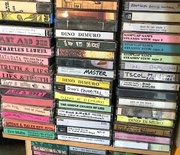
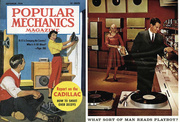 Could an Old-School Tube Amp Make the Music You Love Sound Better?
Could an Old-School Tube Amp Make the Music You Love Sound Better?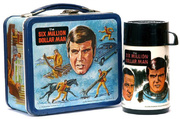
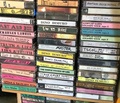 Cassette Revolution: Why 1980s Tape Tech Is Still Making Noise in Our Digital World
Cassette Revolution: Why 1980s Tape Tech Is Still Making Noise in Our Digital World Could an Old-School Tube Amp Make the Music You Love Sound Better?
Could an Old-School Tube Amp Make the Music You Love Sound Better? Vintage 1970s Lunch Boxes Revisited: When Pop Culture Ruled the Playground
Vintage 1970s Lunch Boxes Revisited: When Pop Culture Ruled the Playground Eight-Track TapesEight-track tapes get a bad rap, routinely written off as the poor-sounding…
Eight-Track TapesEight-track tapes get a bad rap, routinely written off as the poor-sounding… Eight-Track PlayersThe eight-track tape deck and format was conceived in the mid-1960s by Bill…
Eight-Track PlayersThe eight-track tape deck and format was conceived in the mid-1960s by Bill… ElectronicsConsumer electronics have been an integral part of our lives since the heyd…
ElectronicsConsumer electronics have been an integral part of our lives since the heyd…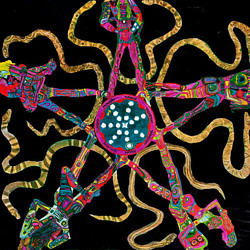 Mari Tepper: Laying it on the Line
Mari Tepper: Laying it on the Line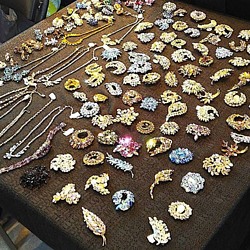 Nice Ice: Valerie Hammond on the Genteel Charm of Vintage Canadian Costume Jewelry
Nice Ice: Valerie Hammond on the Genteel Charm of Vintage Canadian Costume Jewelry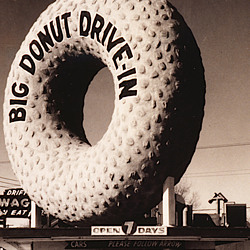 How Jim Heimann Got Crazy for California Architecture
How Jim Heimann Got Crazy for California Architecture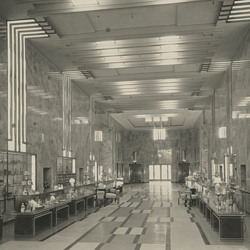 Modernist Man: Jock Peters May Be the Most Influential Architect You've Never Heard Of
Modernist Man: Jock Peters May Be the Most Influential Architect You've Never Heard Of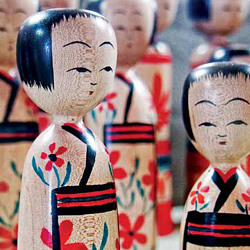 Meet Cute: Were Kokeshi Dolls the Models for Hello Kitty, Pokemon, and Be@rbrick?
Meet Cute: Were Kokeshi Dolls the Models for Hello Kitty, Pokemon, and Be@rbrick?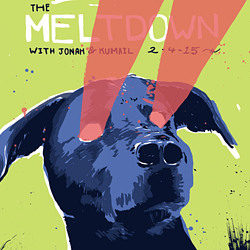 When the King of Comedy Posters Set His Surreal Sights on the World of Rock 'n' Roll
When the King of Comedy Posters Set His Surreal Sights on the World of Rock 'n' Roll How One Artist Makes New Art From Old Coloring Books and Found Photos
How One Artist Makes New Art From Old Coloring Books and Found Photos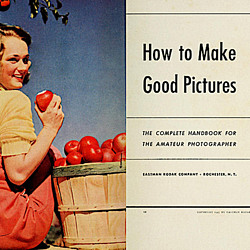 Say Cheese! How Bad Photography Has Changed Our Definition of Good Pictures
Say Cheese! How Bad Photography Has Changed Our Definition of Good Pictures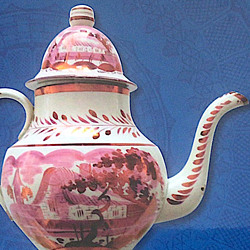 Middle Earthenware: One Family's Quest to Reclaim Its Place in British Pottery History
Middle Earthenware: One Family's Quest to Reclaim Its Place in British Pottery History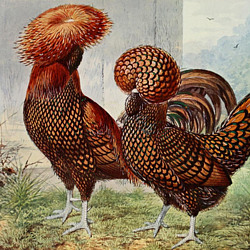 Fancy Fowl: How an Evil Sea Captain and a Beloved Queen Made the World Crave KFC
Fancy Fowl: How an Evil Sea Captain and a Beloved Queen Made the World Crave KFC
I have around 25-30 8-Tracks myself and two players. Do I play the tapes- no [am afraid to!].
Just be really careful around the point where the tape ends join (where the metallic tape is affixed that signals the player to change tracks.) In my experience with them, that’s been the main point of failure. If it breaks and one end slurps back into the cartridge, you have to open it, which often means tearing the labels and also ruining the cartridge if you’re not careful. They usually have weird interlocking tabs that hold the thing together. Also, many cartridges were manufactured with foam rubber pads to tension the tape against the play heads in the machine, which goo with age and have to be replaced. If a cart has the pads with the metal springs you’re probably OK.
And nary a mention of the Q-8, the quadraphonic version of the 8-track.
I visited the 8-Track Museum in downtown Dallas last month and had the most enjoyable hourlong visit with Mr. Burnett in his downtown establishment reviewing his collection and learning about the history of recording mediums.
Mr. Burnett is a fascinating character and his exhibition and tour is well worth a visit. In addition to the museum, the area boasts numerous shops, bars and cafes that offer a great variety of drinks and food.
Bravo to Mr. Burnett and his endeavors!
Ross Self
I also have a bunch of 8 tracks most which I play and some which I have not gotten around to repairing. I have a Pioneer HR- 99 deck and a Motorola unit ( seperate radio and tape units NIB, RV unit). I have an Alan Parsons I Robot tape that the audio quality is incredible. I love em’ and will continue to buy them when I find them. My first add on in my 72 Chevy Van was an 8 track player back in 76′. I also cassette reel to Reel and Vinyl. Long Live Analogue!
Before the 8-Track was the 4-Track that when placed in the player had a cassette wheel raise up into a opening against the capstan. Later the wheel was manufactured in each cassette housing. Some players would play both the 4-track and 8-track tapes. If the Cartridge didn’t have a wheel in it then a mechanism would raise up when the cassette was inserted with a wheel to play the tape. I liked the quad 8-track tapes best. Dark Side of the Moon is fun to listen to in quad.
You haven’t lived in the 60’s/70’s unless your 8-track was at least stolen once from your car!!!
I have been told these x-rated porn tapes are quite scarce 8-tracks. Comments?
http://vintagesleaze.blogspot.com/2011/08/8-track-speed-trap-big-wheeler-with.html#.UM5XEramBEI
Just a little follow-up to my visit to the museum. Mr. Burnett had a variety of failed media; both the 2 and 4-track tapes and players, the Q-8 player and many others such as Edison Wax cylinders and even the weird 16-track machine. In addition, he has something I found cool: an 8-track that folds up to the size of a cassette and fit in your pocket.
Once again, I highly recommend a visit. Just the eclectic compendium of “one off” vanity records is worth the trip.
Denver, CO
My prized possession is Never Mind the Bollocks 8-track i picked up at a garge sale for a quarter in the 90’s.
I used to have to repair 8 track players as an audio bench technician. I was so glad when we stopped taking them in. When they went to plastic pinch rollers instead of rubber, that was the death knell of the format. I had a record store owner client who collected every 8 track released, he had thousands of them. After many of them deteriorated I built him a reel to reel transport with 8 track heads, unspooled the cartidges to reels, and saved his collection.
I have somewhere around 600 8-tracks that I have collected from thrift stores, flea markets, antique malls, used book stores, garage sales… over the last few years. All have been overhauled and repaired with new felt or foam pads, foil splice and so on. I have somewhere around 30 players. Three players get the most use, Pioneer HR-100, Soundesign 8-track/Stereo Receiver and a Columbia component deck with a nice head height/skew adjustment knob on the front that comes in handy when playing a tape recorded on a misaligned machine (such as home recorded tapes recorded using a recorder with misaligned head). Depending on how the tapes were stored, how much use they’ve seen, mishandling and so on, some can sound really really good and some can sound like complete junk. Some of my friends can’t tell the difference between a CD or a good condition 8 track in my Pioneer HR-100. Most 8 tracks will still play and sound good with just a few repairs and a clean, demagnetized and properly adjusted player. If you don’t find them in the free box at a garage sale, you can usually expect anywhere between 10¢ to about $2.00 at most junk shops, flea markets or garage sales.
My husband collects 8-tracks. He also has a few players and recorders. He’s spent a lot of time fixing some of them. He also listens to his favorites frequently.
My ’64 Plymouth Fury requires and has an 8-Track, which keeps the car and it’s contents historically accurate. I most certainly will enjoy this museum upon my next trip to NY and visit the Orphic Gallery, a must destination on my itinerary!
I have made several thousand dollars this years finding, repairing and re-selling on ebay Quad-8 tapes… there is a quite a collector’s market out there who usually digitize them and burn them onto CDs and make them available to other 8 track and multi-channel (MC) sound fans.
My wife had a 1974 Ford van that had an 8 track in it, but we had a very limited collection of tapes. I always thought it would be humorous to put a cassette adapter in it (they made them years ago) then put a cassette to audio output adapter into that and plug that into an mp3 player. In the 60s I worked in an electronics store and I remember the 4 track cartridge player that used the Fidelipac cart that the radio stations used, except it was stereo and it ran at half speed. (3-3/4 ips)
I grew up in the 70’s and remember trails of 8 track tape along the side of the roads! Foghat, BTO, Eagles, BOSTON….oh such great music. I didn’t have an 8 track but my boyfriends with their muscle cars did. I only bought vinyl because cassettes also seemed too fragile.
anyone into music has to go through the 8-track experience, and listen to the tapes, players, and music from the time period 1966-80, and epiphany will strike. The music was different, the gear was different. It was a more durable, stable environment. 8’s are a high maintenance format to take up as a hobby, the players and tapes need attention to keep them running. But it pays huge dividends. If you haven’t heard a sealed 8-track tape that’s just been opened and played in an Akai, Roberts, or Telex tape deck, you haven’t lived yet. Digital music and gear has ruined a lot of the discovery of the musical experience, by dampening down a lot of the harmonics, depth, and background echo in the music.
You can always go back to CD. It takes guts and skill to try 8 track and stay with it. 8-track separates the men from the boys.
“Above: An Akai CR-81D 8-track player with tapes.”
Wrong. It is a RECORDER. It says so in the front panel and also has “REC” button, VUmeters and recording-level controls. A player would miss all of these.
very happy to find you!
I hope you can reply my question: models and production years of Blaupunkt in-dash 8-track am/fm car stereos.
I only know CR-4081, 4091 and 8000 but I am sure they made someone else too.
I am a retired chemical engineer who service Voxson and (sometimes) Pioneer and Blaupunkt sets for vintage car owners Worldwide.
Of course Ferrari, Lamborgini, Maserati, Iso Rivolta, Bizzarrini and so on owners call for Voxson (only european producer in the ’60’s) only but once in a while I am asked to offer a fully serviced Pioneer or Blaupunkt.
Your kind answer will be very appreciated.
In return you may ask me whatever you want, I do this work for hobby and I still buy/listen 8-track cartridges…..another world!
dr. Bruno Zappaterra
Ferrara
Italy
ps: I’ve been in Houston, enjoyed Galleria, belly dancers, armadillos, pink grapefruit juices etc.!
The real problem with the 8-track is that it is 4 stereo tracks multiplexed on the same tape, so albums had to be configured to fit in this – generally resulting in either a rearrangement of the songs from the phonogram album (i.e., the definitive artistic product) and/or a klutzy break in the middle of the song, done by either having a fade out, then track change, then fade in, or just a hokey track change in the middle of the song. The cassette tape didn’t have this problem as its 2 sides correlated with the 2 sides of the phonogram, and with only the mild hassle of having one side have extra space at the end (easily handled by auto-forward.)
I’m looking for a service/repair manual for my Roberts Model # R-8026 AM/FM Stereo 8 Track Multiplex. I’ve lost a channel and need a schematic. Thanks, Chuck
I am studying 8 track today. Corvette offered them as late as 1982. What year did other cars stop offering them?
http://www.my1976corvette.com/rare-1982-corvette-factory-options/
I love all kinds of odd formats. I actually make new master blank Edison cylinders, and musical cylinder records. Anyhow I have an Akai X 2000-S that has reel to reel,cassette, and 8 track and just got it going the other day. I have about 300 8 tracks, though have not listened to one in about 20 years, and re-introduced myself to the format yesterday, those Akai units make 8 tracks sound very good indeed!!!
Dear Sir, I was really amazed seeing there’s still people loving (and using) “old” stereo-8s. I’ll be glad to be in touch with youm at your convenience, since I’m an old collector of records (from 78 rpm to 16″ transcriptions), tapes of any kind and size (includin so many rare and unissued items), HI-FI equipments, including of course the Stereo 8 (4 channels too); more over I worked at RCA studios and still, although 80 aged, I love anything involved with tapes/records/recording prod. (as well as i like to drive good old cars, I just sold my Mustang II…..). Well, I’ll be glad to hear from you, my best wishes, Raffaele (I’m a pianist too, i made duets with Ralph Sutton and Ray Bryant….)
Having boasted for years and perhaps decades to have the largest functioning 8-track collection that I had ever seen or heard of, I am pleased to see what Bucks has assembled for the medium. Thanks for some history I did not know about.
I have tucked away in storage the remains of my collection that once was over a 1,000 tapes of select rock (mostly), jazz, classical, and other assorted genres– boxes and boxes of them and a couple players for them.
I developed quite the knack for fixing them, repairing the track-change tape that connected the beginning and end of the continuous loop, splicing out eaten up sections if need be, and switching to better boxes. I recorded my first music mixes on 8-tracks. Contrary to the post from the player repairman, I preferred the plastic pinch rollers to the rubber ones. The rubber ones would easily melt, sometimes to goo, in the heat that can build in a car or van. And the boxes with rubber rollers usually came with foam for the other two areas where the player read the tape (one bay for the head to pick up the music and one for the track change to be read) which also sucked because the foam easily deteriorated. The better set-up of the plastic roller and the copper arms with padding works the best. Then there was the box and tape tray to be considered; some had the least friction for this combo of parts, so I switched to the boxes with all these better parts.
The one control that I found essential to have in a player (home and automobile) was the tapehead’s azimuth adjuster. On some players, the azimuth adjustment could be accessed through a hole on the bottom, using a screwdriver. I opened up such holes when there were none and attached various kinds of turn knobs so when a tape was put in, I could fine tune the tape head’s position to get the clearest playback for each tape, particularly avoiding a problem with some 8-tracks: doubletalk. I even installed speed control on some players, if they had a fast-forward component that I could tap into.
Okay enough talk of all those years I spent maintaining the collection I loved having and that now sits in storage (I’m living out of town for some time now or I’d have one of the players up and running in my audio/video entertainment center). Let me close by saying that one argument for why the 8-track was better than the cassette was that because of the large film, the 8-track has better resolution of the audio signal. Compared to LP’s, the often annoying popping and crackling noise of LP’s was replaced by a sometimes loud hissing, but the hissing was continuous and easier to fade out of attention than LP noise.
Thanks for your efforts, Bucks!
I long since wanted to pick up an 8-track recorder for my home system. Ironically as child in the 1970’s I was inundated with the format, as my parents were big 8-track fans (mostly for their car). But once the 1980s kicked in, they were gone (not my parents…the 8-tracks) :P
I would think that a player/recorder from the end days of the format (1981-1983) would be the best made, but correct me if I’m wrong. I’m well aware of some the famed units from 70s, like the Marantz TDR-830 and the Pioneer HR-99. But if you were me, which late model machine would you pick up for years of reliable fun?
I have an electrophonic model T-9 solid state stereo 8 track. It has two speakers that mount together where each speaker is facing opposite sides. It also unmounts and opens up to where you can spread each speaker out about 6 feet apart to where each speaker is facing you. It has an 120 volt ac plug, for the wall, a cigarette plug for cars or boats, and can run on 12 volts DC with 8 D batteries. I am actually doing research on it and wondering if any collector out there would be interested. It is really a cool piece of history.
Wow I have found a great place I will soon visit. I never knew but now I do and I will definitely go for a visit. I have a good collection of 8 track tapes myself. I wonder if he knows about some of the ones I have. I will be sure and ask him.
Hi, Hope someone out there can tell me if I can still buy an 8 track quadraphonic cartridge player. In the late sixties I bought an MGB GO which had a stereo cartridge player, and I still have the tapes, (the ones that didn’t self destruct). About 1971 I bought and fitted a Motorola 8 track quad player into the same car and blew my mind. Absolutely amazing sound. I still have the only two quad tapes I bought..John Keating Space Experience and Barbara Streisand Stoney End.
Like an idiot, I sold the car with the player!
I did record these on a stereo player, but half the sound is missing. Can anyone PLEASE help?
I used to have a 4 track player in my car back in the 60’s what ever happened to them? are they collected{if you can find any}now days?
I have hundreds of 8-track tapes and about a dozen players. I’ve been collecting them since college in the late 1980’s, mainly because when I was a poor college student, you could get your favorite hits of the 1970’s — all those songs I used to listen to on cheap AM radios, my favorite toys as I was growing up — on 8-track tapes that were a quarter each at the local Goodwill. Since I was a broadcasting student, I quickly found that the pads and splicing tape we used to repair broadcast cartridges at the campus radio station were also quite useful to repair broken 8-tracks. (Later I discovered this was no coincidence, the 8-track cartridge format was based on the broadcast cart developed in the 1950’s, with a few changes). After some experience, I got pretty good at repairing both formats (broadcast carts and 8-track carts).
When I got curious about quadraphonic sound, I found a Sansui QR-4500 receiver and later a QRX-4500 on ebay, and collected three Panasonic RS-845US quadraphonic cart players (I must have an illness; maybe it’s just garden-variety hoarding). At any rate, these Panasonic players are among the best I’ve used, and that’s what I recommend you seek out if you’re interested in exploring quad. They play stereo 8-tracks as well. Some 8-track tapes in quad format can be ridiculously expensive, even on ebay, but generally speaking are less pricey than open-reel quad tapes, so it’s a more economical route. You will want a decent 4-channel receiver, like the Sansui I mentioned or other fine specimens by Technics or Pioneer, and 4 matching full-range speaker systems (there isn’t room for a subwoofer in quad).
Now I’m to a point in life actually where I’d like to divest myself of some of these musical treasures. I have owned some carts so long that the pads I replaced need to be replaced again. My current living situation requires me to downsize, and I have had the impulse several times to contact the 8-track museum to see if they receive donations for display. But I haven’t done so, mainly because I collected music I liked, or thought I might find intriguing, with no regard to what might be deemed ‘collectible’ by anyone else. Most of my carts are stereo, not quad…but I am happy to say I’ve been able to acquire not one, but two quad-8 copies of one of my favorite albums of the early 1970’s, the Shaft soundtrack by Isaac Hayes on Enterprise Records. (Shut your mouth!! We can dig it.)
My brother was in the Navy in San Diego in 1970 he brought back an 8-track tape I really like but I haven’t been able to find the artist it was in a red case I think it’s said Dodo and synthesizer music. It’s just closed but it’s not the right name. Do you know where I can go look for case covers so I can maybe see it.
I’ve always held onto the past in some ways, in particular, music. Still have vinyl and about 5 still sealed 8 tracks from ‘The Doors’ I bought back while in high school in the 70s, I never opened them. They were backups, and as time went on, I decided that I would never crack the seals on them. I gave away my last 8 track player (which was also brand new and in box) just a few years ago to one of my nephews. He’s an old school type, loves the old stuff and I knew he’d appreciate the player and old tapes I gave him.
I have about 2 dozen 8 track tapes. Manilow Como, Rogers, Mathis, Fleetwood Mac
Glen Miller and more. Are these worth anything? Is there really anyone still
buying them? The truth is, I’m 85 and thought it might be about time to clean out
my garage. These have been on the shelf with old 45’s and 78’s. My kids and
grandkids get a good laugh at some of the stuff I’ve saved over the years.
Thanks for any help.
Frank V
I collect rare cassettes, actually. I’m pretty sure I have the ra rest collection in the world, as many are only 5 or 6 left in existence, and some I have the only one. In passing I’ve also built up an unintended colection of very rare 8 tracks, like Georgte Harrison’s wonderwall musicm the Small faces on MGM, Captain Beefheart Moonbeams,, Mike Vernon’s solo album, and some slightly scarce ones too, like Kiln House and Chris Youlden’s Nowhere Road and Looking In.. well, you get the idea..
I have absolutely no idea if the 8 track collecting community is hot or not, but I see a lot more stores specializing in 8 tracks online than you would expect, None for cassette ;-(
I’d trade them all for a few verve Zappa cassettes like “money” “absolutely free” or “Ruben and the JEts” becaus those are the only ones I’m missing .. a US “Lumpy gravy” probably too as I have the British one.
I just bought a new old stock Pioneer 8 Track recorder and another new old stock Pioneer 8 track player. My home theater system has all vintage recording formats including a 7 cassette changer from Pioneer too. My friends always said I had everything but an 8 track – now I have that too.
My biggest problem is worn out tapes. 8 Tracks are considered an obsolete format so local record stores like Amoeba will only pay 25 cents in store credit for them. If you get into this format note many old tapes need the pressure foams replaced as they disintegrate with age, also some need replacement sensing foils which tell the machine to change a track. I have been able to salvage 25% of the old tapes I found to working order – many are too messed up inside to fix. Repair pads and such are available on line… I’ve had the best luck converting 4 track to 8 track (four track had no roller in the case but can be transplanted to an 8 track case with the roller).
What a great article, thanks for that.
In ’72 I bought a Ford Econoline van that had an early open frame 4-Track player mounted under the front seat, and big speakers in the back, astride the mattress.
It came with a box of about 20 tapes, all great stuff too, Santana, Led Zep, Doobies, etc., quite a bit of partying went on in that van, along with a great soundtrack for the times.
I also still have a nearly full case of NOS blank Ampex 8-Track tapes, don’t know what to do with them.
I’ve always had an affinity for analog technology through the years and the triggering mechanism that catapulted me into the 8 track world was buying an old cheap chevy conversion van for road trips to concerts and fishing trips. I soon stumbled upon an 8 track car deck at a garage sale and the rest is history…now lots of home tape decks, numerous car decks, portable players, cases of tapes etc. I’m getting pretty good at repairing and maintaining players and tapes. By doing all of this…a new age of discovery has happened and it has allowed me to listen to a lot more music from artists that are never played on the radio since I’ve been alive…for example: I’ve never heard one single song from Robin Trower on the radio here in backwards Idaho…not one single time have these rotten radio stations played a Robin Trower song…but by the miracle of 8 tracks I found Robin Trower and now have all of his records. — Thank you 8 track for allowing me to experience this and so much more! —
Very great article, thanks for that……
I have about just 1-2 dozen 8 track tapes.
Bucks (or anyone else)….what is the status of the “Spinal Tape” movie?…can’t wait!!!
The best car sound I ever had was my Quad 8-track player in 1975 it was a clairion just the player no radio I bought new for 170.00 in 1975 that was a lot. The tapes had only 2 programs on them not 4 I still have a box of them today. I never paid for gas in my car all my friends bought my gas just to ride with me.I still run into some of them and mention how awesome my Quad player was 45 years later. We missed something here why does my 7.1 surround sound 6000.00 worth not compare to the sound of that Quad in my car? Please contact me if you find anything that compares, and yes I have the Sony Super Autio CDs and player not even close. Thanks for reading.
Hello Bucks. I am a retired radio presenter about to relocate to a retirement village. (Ugh!..pray for me!) Clearing out my studio, I came across a dozen or so 8 track carts which we used in the day for broadcasting radio spots. Do they have any value in the internet market place and if so, with whom? I look forward to hearing from you! Peace and love, Neil.
Great Article!!